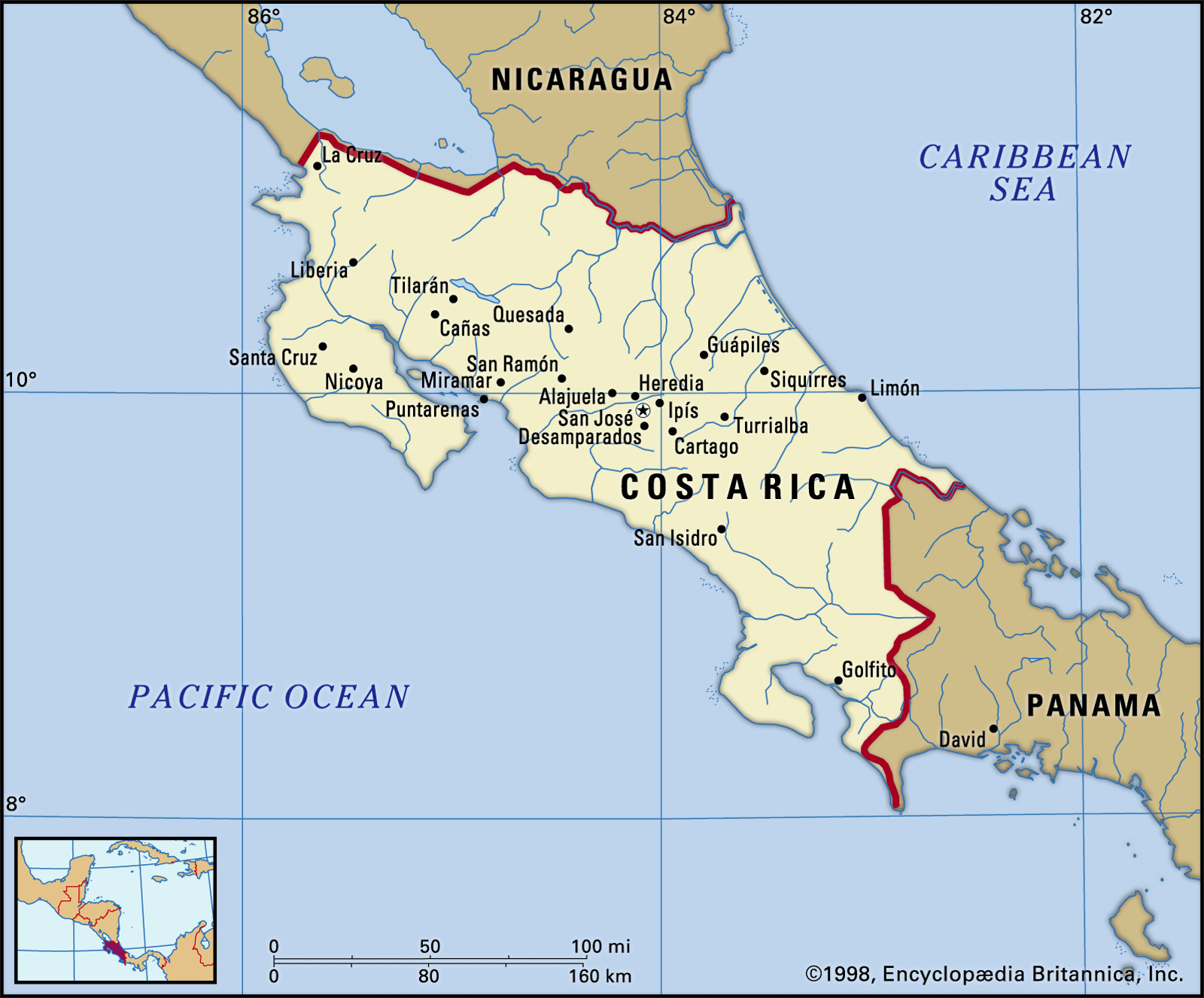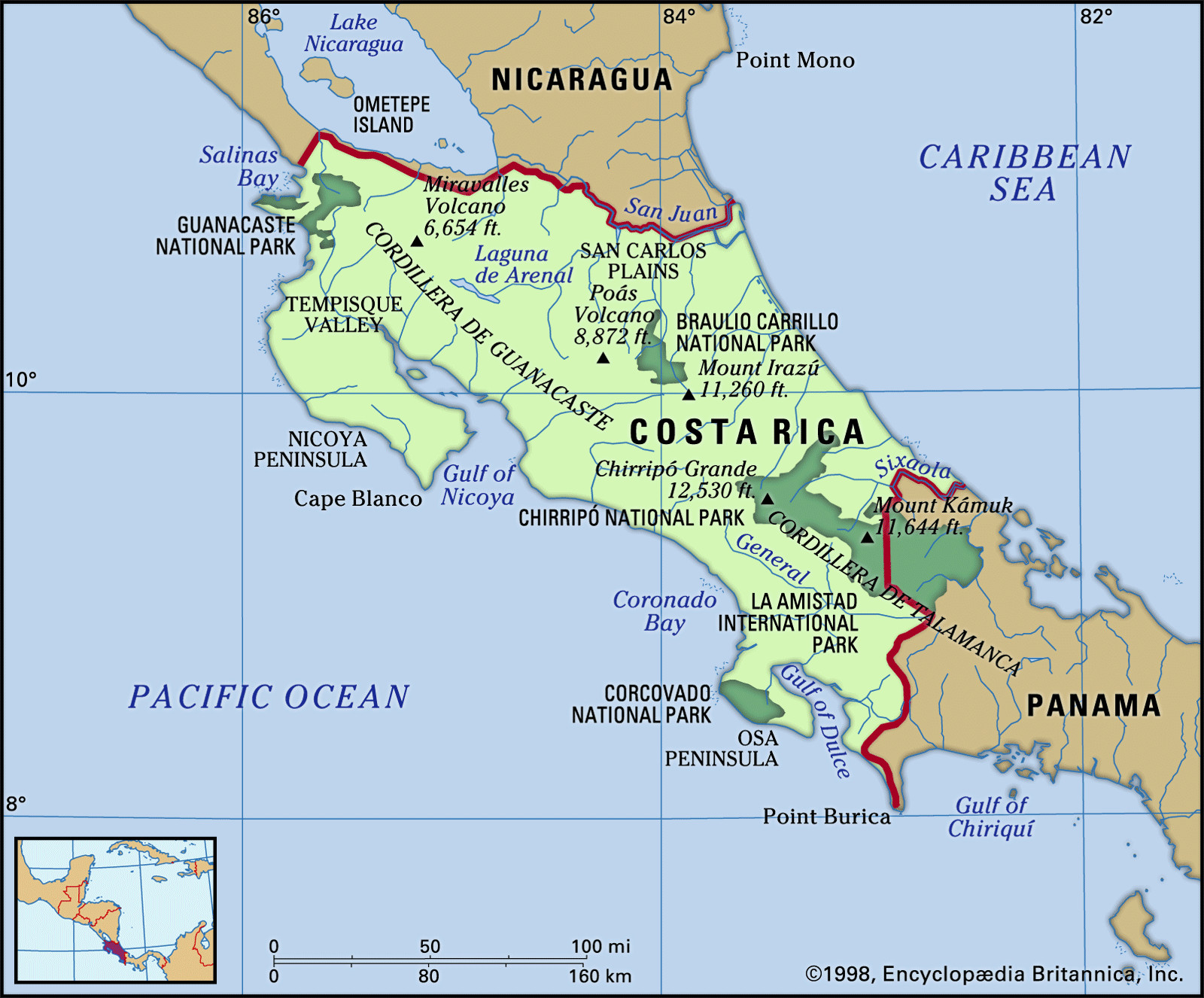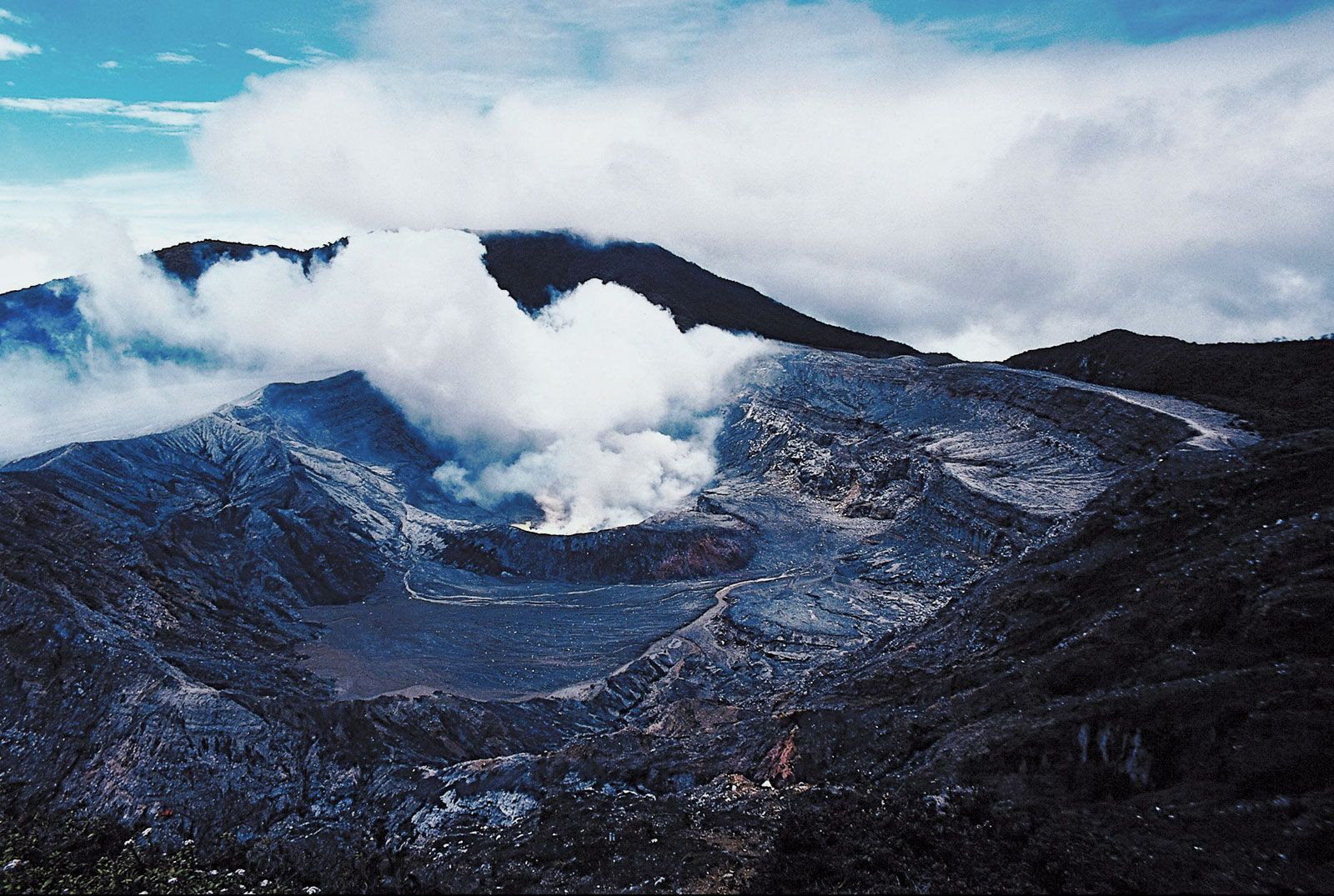Costa Rica, officially the Republic of Costa Rica, is a captivating country nestled in Central America. Known for its stable democracy, commitment to peace, and breathtaking biodiversity, Costa Rica beckons travelers and nature enthusiasts from around the globe. But Where Is Costa Rica exactly?
Costa Rica is strategically positioned on the Central American isthmus, bridging North and South America. It is bordered by Nicaragua to the north, Panama to the southeast, the Caribbean Sea to the east, and the vast Pacific Ocean to the west. This unique location gifts Costa Rica with diverse ecosystems, ranging from pristine coastlines to lush rainforests and imposing volcanoes.
 Costa Rica location map
Costa Rica location map
Of all Central American nations, Costa Rica stands out for its long-standing democratic traditions and political stability. Its 1949 constitution laid the groundwork for a robust unicameral legislature, a fair judicial system, and an independent electoral body. Remarkably, Costa Rica abolished its army in 1949, redirecting resources towards social and educational advancements. This commitment to peace has allowed Costa Rica to flourish, even amidst regional conflicts in the past.
Costa Rica boasts exceptional literacy rates, exceeding ninety percent, a testament to its strong emphasis on education from primary school to university. San José, the vibrant capital city, serves as the intellectual heart of Central America, home to renowned universities and a thriving literary scene. The nation’s dedication to human rights and peaceful principles has attracted numerous non-governmental organizations and pro-democracy groups to establish their headquarters in San José.
Beyond its societal achievements, Costa Rica is celebrated for its unwavering dedication to environmental protection. The country is home to a vast network of national parks, safeguarding its rich biodiversity. This commitment, combined with a well-developed ecotourism industry, has drawn significant foreign investment. Costa Rica has successfully transitioned from an agriculture-based economy to one driven by services and technology in recent decades.
Costa Ricans, affectionately known as “Ticos,” embrace the phrase “pura vida,” meaning “pure life.” This encapsulates their optimistic outlook and appreciation for life’s simple pleasures. They take immense pride in their political freedoms and relatively stable economic environment.
The heartland of Costa Rica, concentrated around the Valle Central or Meseta Central, is fertile ground for coffee cultivation, a major export. While bananas were historically the primary export, pineapples have surged in importance, surpassing coffee as the second-largest export in the late 20th century.
Exploring Costa Rica’s Geography
Costa Rica’s geography is remarkably diverse for its size. Extending from northwest to southeast, it is bordered by Nicaragua and Panama, and flanked by the Caribbean Sea and the Pacific Ocean. At its narrowest point, the country spans a mere 75 miles (120 km) between coasts.
 Costa Rica physical features map
Costa Rica physical features map
Relief and Volcanic Activity
Two prominent mountain chains traverse Costa Rica: the Cordillera Volcánica in the north and the Cordillera de Talamanca in the south. The Cordillera Volcánica, as its name suggests, is characterized by volcanic activity and is further divided into the Cordillera de Guanacaste, Cordillera de Tilarán, and Cordillera Central ranges. The Cordillera de Talamanca, a UNESCO World Heritage site, is geologically distinct, composed of granite. Mount Chirripó, Costa Rica’s highest peak at 12,530 feet (3,819 metres), is located within this range.
Volcanoes like Irazú and Poás in the Cordillera Volcánica are accessible by paved roads to their crater rims, offering stunning views but also posing potential hazards. Earthquakes are a significant natural risk throughout much of Costa Rica. Arenal Volcano, the youngest stratovolcano, remains active, reminding of the dynamic geological forces shaping the landscape.
 Poás Volcano crater
Poás Volcano crater
The Valle Central, a significant structural valley, is bisected by the continental divide. The eastern part drains into the Caribbean via the Reventazón River, while the western part feeds into the Pacific via the Grande de Tárcoles River. Another major valley, the Valle del General, lies at the base of the Cordillera de Talamanca. The Caribbean lowlands, to the north and east of the central mountains, comprise about one-fifth of the country. The Pacific lowlands are smaller, encompassing roughly one-tenth of Costa Rica’s territory.
Climate and Precipitation
Costa Rica experiences a tropical climate influenced by its location between two oceans and varied elevations. The Pacific coast sees abundant rainfall during the wet season, generally from May to October in the north and April to December in the south, driven by thermal convection and onshore breezes. The Caribbean coast receives ample rainfall year-round due to northeasterly trade winds, with the Barra del Colorado region experiencing the heaviest precipitation. Mountainous regions enjoy warm temperate climates, while the Pacific slopes have distinct wet and dry seasons.
San José, situated in the Valle Central at 3,800 feet (1,160 metres), benefits from moderate temperatures and consistent rainfall.
Lush Plant and Animal Life
Costa Rica’s diverse climate and topography contribute to its exceptional biodiversity. Dense evergreen forests, including mahogany and cedar, cover about a third of the land. Oak forests thrive in the Talamanca range, transitioning to mountain scrub and grasses at higher elevations. Deciduous forests are prevalent in the drier northwest. Palm trees fringe the Caribbean coast, and mangroves line the Pacific gulfs of Nicoya and Dulce. Orchids, mosses, and a myriad of tropical plants flourish throughout the country. Costa Rica is a haven for tropical biologists, with research stations like the Organization for Tropical Studies and the Tropical Agricultural Research and Higher Education Centre (CATIE) facilitating extensive studies.
 Costa Rican forest and grassland
Costa Rican forest and grassland
Costa Rica’s rich ecosystems support a vast array of animal life. Mammalian species include monkeys, anteaters, sloths (with South American origins), and deer, wildcats, coyotes, and foxes (with North American connections). The country is a birdwatcher’s paradise, teeming with tropical birds in the lowlands. Reptiles like snakes and iguanas, and amphibians such as frogs, are also abundant.
Conclusion
So, where is Costa Rica? It’s in the heart of Central America, a vibrant nation celebrated for its peace, democracy, and unparalleled natural beauty. From its volcanic mountain ranges to its pristine coastlines and rainforests teeming with life, Costa Rica offers a unique and enriching experience for those seeking to explore one of the most biodiverse and welcoming countries on Earth. Its strategic location and commitment to sustainability make it a true gem in Central America and a destination worth discovering.

